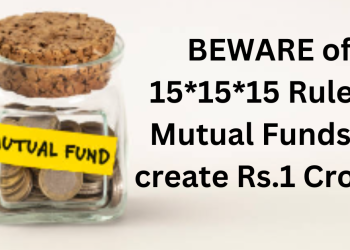(Bloomberg Opinion) — Markets are weird right now. The value of risk-free assets has gone all out of whack, and if that doesn’t seem scary, keep reading.
Sri Lanka is facing a debt crisis, and yet its stock market is up more than 60% in the last year. The Federal Reserve is getting ready to hike rates to combat inflation, and the higher interest rates move the lower stock prices should be. The S&P 500 may be down the last few weeks, but it’s still up more than 20% for the last 12 months.
What all this shows is how disconnected our sense of risk has gotten from reality — or more precisely, how the value of safety has become distorted.
The purpose of financial markets is to price and distribute risk. But the most important asset price is the price of safety, which essentially is the yield on risk-free assets. Whether anything is truly risk free is an important and existential question. But to be practical, we’ll call an asset risk free if you’re certain to get your investment back along with some promised return.
Common examples are 3-month Treasury bills and other close substitutes like money market funds, because they promise a certain return, the U.S. government is very unlikely to default, and there is a deep, liquid market for them. And because they are short-term loans, their price won’t change that much even if interest rates move around.
We care about how to value “risk free” because it’s the most systemically important asset in financial markets. It determines the value of pretty much everything: stocks, lending collateral, bond yields, investment allocation. The risk-free rate is the foundation of asset pricing; if it’s askew, so are markets.
In theory, the risk-free rate should reflect how much you need to pay investors to postpone spending today until tomorrow. But in reality, the rate is determined by policy, and that’s become even more true since the pandemic. The government both supplies and buys risk free bonds. Fed policy aims to lower the risk-free rate (to spur investment) in bad times by buying lots of bonds, and to increase the rate by selling bonds when the economy overheats.
And it’s not just the U.S. Federal Reserve that influences risk-free bond yields. In the last 25 years, countries around the world bought up lots of safe assets, and drove up the price, to manage their currency.
Since the 2008 financial crisis, the real (inflation-adjusted) risk-free rate has been consistently negative, and now it’s even more so. Dips below zero here and there are normal, but it’s hard to understand why the market would price the risk-free rate in the negative for so many years. Here’s why that can be dangerous: Depressing the risk-free rate is presumed to cause excessive speculation, because investors seek out higher returns from riskier assets to reach their investment goals. And it also distorts investors’ exposure to risk: they may have more or less than they realize, since the risk-free rate is the baseline for assessing the value of less-safe assets.
Maybe that explains why stock markets around the world are so high and why crypto assets are worth so much despite offering such little value. This may all gradually work itself out, and strong growth and high profits will keep stock prices high. Or perhaps inflation will fall to tolerable levels and central banks will continue their negative-rate policies for another decade and celebrities will keep talking about how crypto is the future.
But if interest rates do suddenly rise, either from persistent inflation, Fed policy, or concerns about debt, markets could get shocked back into reality. Stocks could fall and stay low, bond prices will shoot up and the price of credit will rise to levels investors haven’t experienced in decades. Super-risky assets like crypto will also fall, demonstrating, once again, they don’t hedge anything. By distorting the price of safety, the risk-free rate has become one of the biggest dangers. And when that happens everything is riskier than it looks.
More From Other Writers at Bloomberg Opinion:
This column does not necessarily reflect the opinion of the editorial board or Bloomberg LP and its owners.
Allison Schrager is a Bloomberg Opinion columnist. She is a senior fellow at the Manhattan Institute and author of “An Economist Walks Into a Brothel: And Other Unexpected Places to Understand Risk.”
















